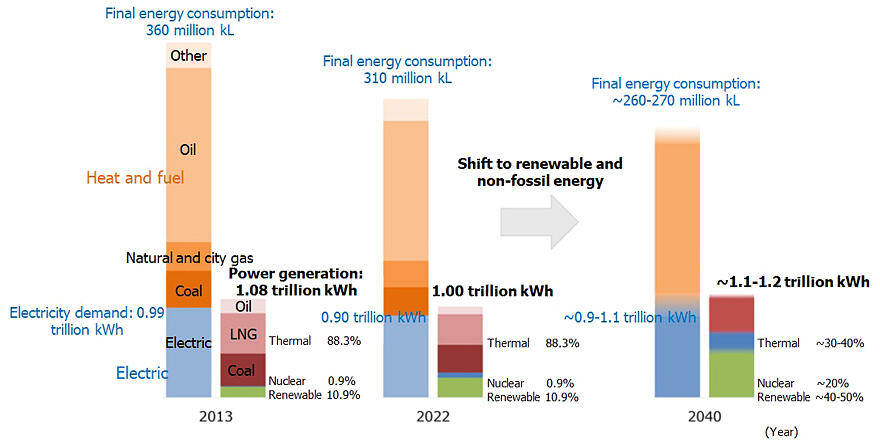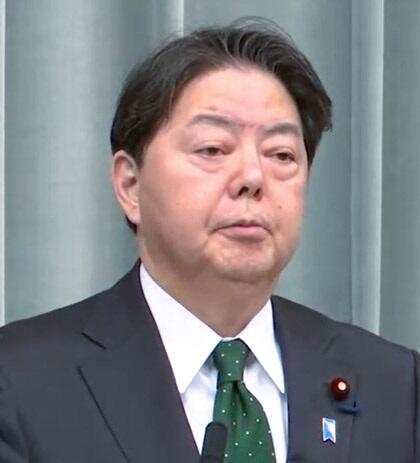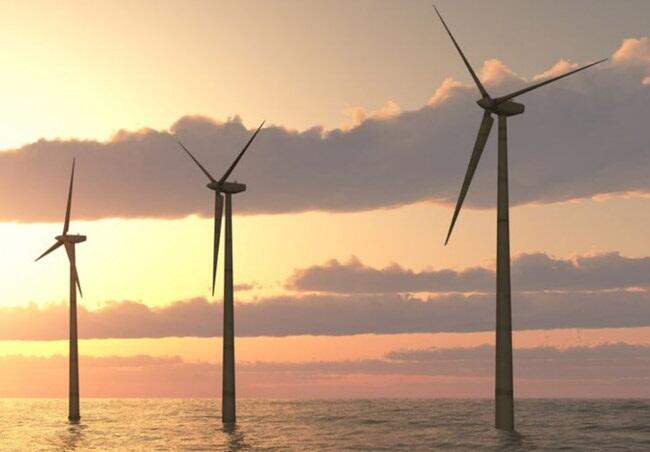On February 18, the government approved a draft revision of the "Basic Energy Plan," which establishes the direction of the country's medium- to long-term energy policy. The phrase "reduce dependence on nuclear power plants" that had been used since the accident at TEPCO's Fukushima Daiichi Nuclear Power Station in 2011 was deleted from the Plan, and it clarified the policy to "make the maximum use" of renewable energy and nuclear power, positioning them as "carbon-free power sources." The revised Plan sets the target renewable energy ratio in FY2040 at 40%-50%, roughly double the recent record.

Provided by the Agency for Natural Resources and Energy
Chief Cabinet Secretary Yoshimasa Hayashi said at a press conference after the Cabinet meeting on March 18, "From now on, relevant ministries and agencies will work together to achieve a stable energy supply, economic growth, and decarbonization simultaneously. Countermeasures for climate change are a challenge that awaits all humankind, and we will contribute to the decarbonization of the world through Japan's experience and technology."

Provided by the Cabinet Public Relations Office
The Basic Energy Plan was first formulated in 2003 based on the Basic Energy Policy Law. The Plan is reviewed approximately every three years, and this is the seventh plan. The Plan includes forecasts and issues regarding the composition of each energy source, such as renewable energy, nuclear power, and thermal power, serving as a guideline for the country's energy structure and influencing the investment plans of private companies.
The revised Basic Energy Plan predicts that electricity demand will increase due to the spread of artificial intelligence (AI) and construction of new data centers and semiconductor factories, which consume large amounts of electricity. The required amount of electricity is expected to increase to 1.2 trillion kW h, approximately 1.2 times the amount required in FY2023.
The composition of power sources in FY2040 is set at 40%-50% renewable energy, 20% nuclear power, and 30%-40% thermal power. The breakdown of renewable energy is 23%-29% solar power, 4%-8% wind power, 8%-10% hydropower, 1%-2% geothermal energy, and 5%-6% biomass energy. The actual percentage of renewable energy in FY2023 was 22.9%, and compared to this, the target of up to 50% for FY2040 is a significant increase.
The Basic Plan lists "coexistence with local communities," "reducing burden on the public," "dealing with output fluctuations," and "dealing with used solar panels" as issues to be addressed when introducing renewable energy. As for solar power generation, suitable land is decreasing, and concerns are being raised for its environmental damage. Instead of conventional methods, the Plan focuses on perovskite solar cells, which can be installed on walls and windows and are considered next-generation technology, and aims to generate approximately 20 million kW in 40 years.
The percentage of nuclear power plants in the power supply mix for FY2040 is set at approximately 20%. The actual percentage in FY2023 was 8.5%. The calculation shows that almost all of the more than 30 existing nuclear power plants must be restarted to achieve this percentage. The Basic Plan includes the word "reconstruction" for the first time, stating that "we will move forward with concrete measures with the aim of replacing nuclear power plant sites where decommissioning has been decided with next-generation innovative reactors." Regarding construction costs, the government is considering seeking loan support from the "GX (Green Transformation) Promotion Organization," which has national budgetary support.
During the public comment period prior to the Cabinet decision, more than 40,000 comments were received, a record number, approximately seven times the number of comments received for the previous plan. Many comments were critical of the policy shift toward a clear "return to nuclear power." At a press conference after the Cabinet meeting on March 18, Economy, Trade and Industry Minister Yohji Muto said, "It is true that there are concerns in prefectures where (nuclear) power plants are located. I want to provide a detailed explanation."
In addition, the goal is to reduce thermal power, accounting for 68.6% of the power source mix in FY2023, to around 30%-40% by FY2040. Regarding coal-fired power generation, which emits a large amount of carbon dioxide and has been heavily criticized globally, the government stated that it will "reduce electricity generation from inefficient coal-fired power plants," but did not specify the percentage of coal-fired power generation within thermal power generation.

Provided by the Agency for Natural Resources and Energy
Parallel to the Basic Plan, the government also approved a new Plan for Global Warming Countermeasures with a greenhouse gas emission reduction target of "60% reduction in FY2035 and 73% reduction in FY2040 compared to FY2013" and the "GX2040 Vision," a strategy to make decarbonization a concrete national industrial policy.
Japan's "Next Greenhouse Gas Reduction Target (NDC)" based on the new Plan for Global Warming Countermeasures was submitted to the United Nations on March 18. The previous target was "to achieve a 46% reduction in FY2030 compared to FY2013, and to continue the challenge to reach a higher reduction of 50%."

Provided by the Ministry of the Environment
Original article was provided by the Science Portal and has been translated by Science Japan.




